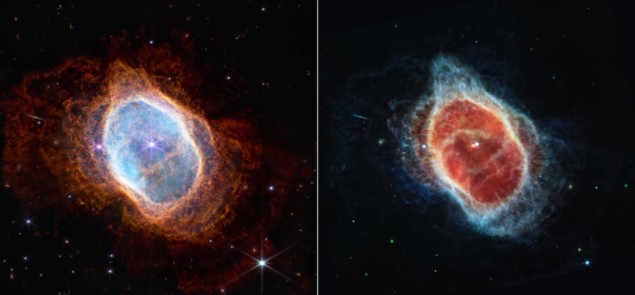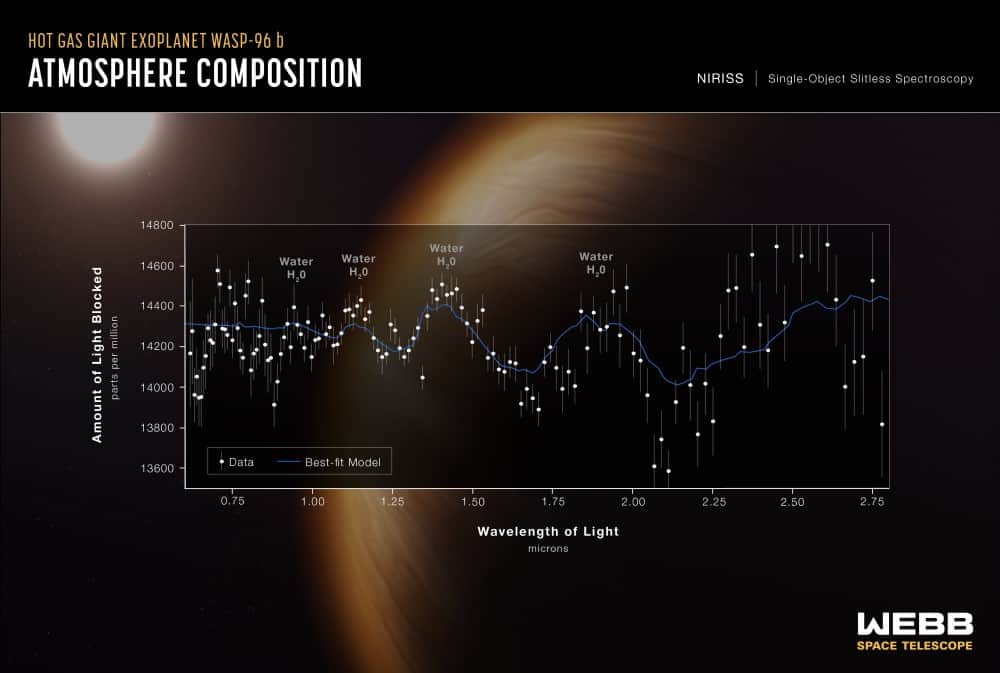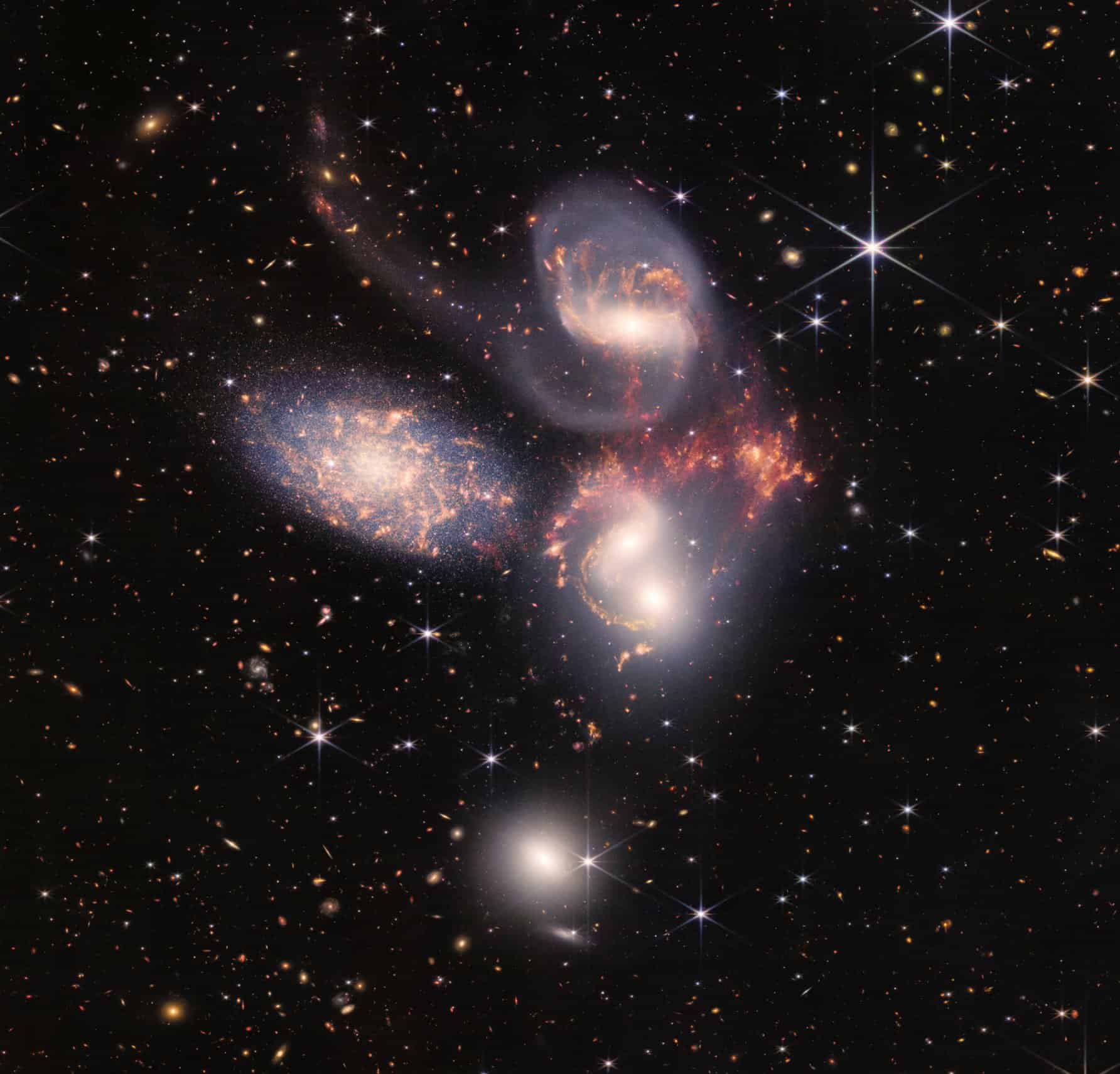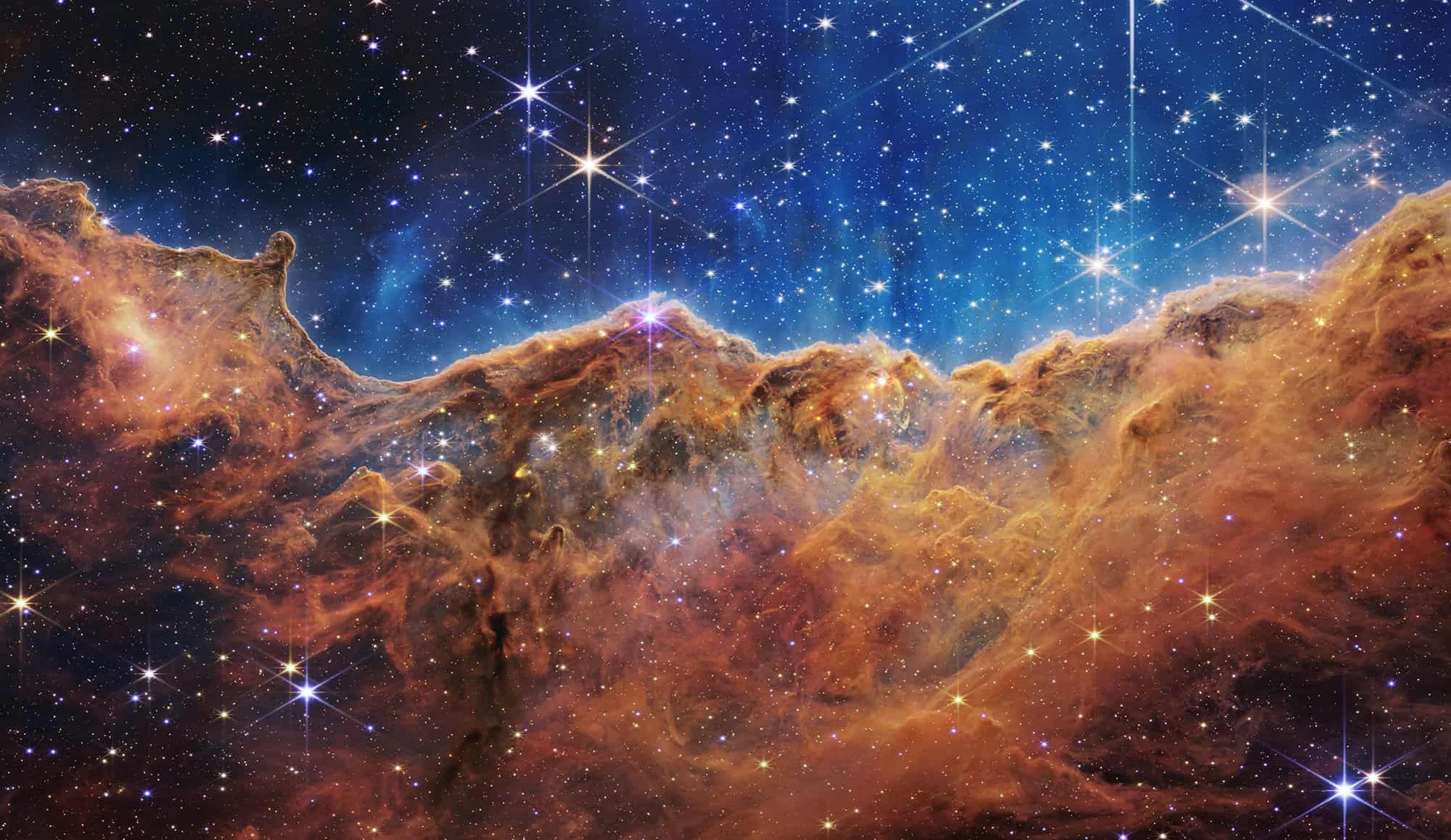James Webb Space Telescope reveals its first spectacular images of the cosmos
12 Jul 2022 Michael Banks

The first tranche of images and data from the $10bn James Webb Space Telescope (JWST) has been released today by NASA and partners. The four spectacular pictures – showing nebulae, a galaxy constellation as well as the atmospheric spectra of an exoplanet – follows the unveiling of the JWST’s first “deep field” image yesterday.
The JWST was launched on 25 December 2021 and a month later it had completed most of the delicate procedures to unfold and unpack the telescope. In February the JWST released the first unaligned picture followed in late April by the first aligned images.
“Every image is a new discovery and it will give humanity a view of the universe that we have never seen before,” said NASA administrator Bill Nelson at an event today at NASA’s Goddard Space Flight Center. “These images show us light that is 13.5 billion years old. That is the threshold we are now crossing.”READ MORE

Yesterday US president Joe Biden unveiled the first full-colour science image. Known as “SMACS 0723”, it is the telescope’s first “deep field” picture and shows how massive foreground galaxy clusters magnify and distort the light of objects behind them, allowing a deep-field view into extremely distant and faint galaxy populations.
Today, the images and data from four further targets have been unveiled. They include an image of the Southern Ring, or “eight-burst” nebula (main image above), which is a planetary nebula almost half a light-year in diameter and is located approximately 2000 light-years away from Earth.
NASA has also released the atmospheric spectra of the WASP-96b exoplanet (below), which was first announced in 2014. Composed mainly of gas, the planet is located nearly 1150 light-years from Earth and orbits its star every 3.4 days. This spectra, obtained by the JWST’s Near-Infrared Imager and Slitless Spectrograph (NIRISS), is the most detailed infrared exoplanet transmission spectrum ever collected. Atmospheric composition of the WASP-96b exoplanet. (Courtesy: NASA, ESA, CSA and STScI)
Atmospheric composition of the WASP-96b exoplanet. (Courtesy: NASA, ESA, CSA and STScI)
 Atmospheric composition of the WASP-96b exoplanet. (Courtesy: NASA, ESA, CSA and STScI)
Atmospheric composition of the WASP-96b exoplanet. (Courtesy: NASA, ESA, CSA and STScI)Another object that has been pictured is Stephan’s Quintet in the constellation Pegasus (see below). It is about 290 million light-years away and is the first compact galaxy group to be discovered where four of the five galaxies within the quintet often have close encounters. The image was taken by JWST’s Near-Infrared Camera (NIRCam) and Mid-Infrared Instrument (MIRI) Stephan’s Quintet. (Courtesy: NASA, ESA, CSA and STScI)
Stephan’s Quintet. (Courtesy: NASA, ESA, CSA and STScI)
 Stephan’s Quintet. (Courtesy: NASA, ESA, CSA and STScI)
Stephan’s Quintet. (Courtesy: NASA, ESA, CSA and STScI)Last, but not least, is the Carina Nebula (see below), which is one of the largest and brightest nebulae in the sky and is located about 7600 light-years away in the southern constellation Carina. The image was taken by NIRCam. Cosmic cliffs in the Carina Nebula. (Courtesy: NASA, ESA, CSA and STScI)
Cosmic cliffs in the Carina Nebula. (Courtesy: NASA, ESA, CSA and STScI)
 Cosmic cliffs in the Carina Nebula. (Courtesy: NASA, ESA, CSA and STScI)
Cosmic cliffs in the Carina Nebula. (Courtesy: NASA, ESA, CSA and STScI)“We have an observatory that is excellent shape,” JWST project manager Bill Ochs from the Goddard Space Flight Center noted. “When I look at these images I see dedication, personal sacrifice, passion and all the individuals who have worked on this mission.”
The JWST is a collaboration between NASA, the European Space Agency and the Canadian Space Agency. “These first images and spectra from [the JWST] are a huge celebration of the international collaboration that made this ambitious mission possible,” says ESA director general Josef Aschbacher.
It is expected that the JWST will continue observations for at least two decades.

Michael Banks is news editor of Physics World magazine
from physicsworld.com 20/7/2022
Δεν υπάρχουν σχόλια:
Δημοσίευση σχολίου